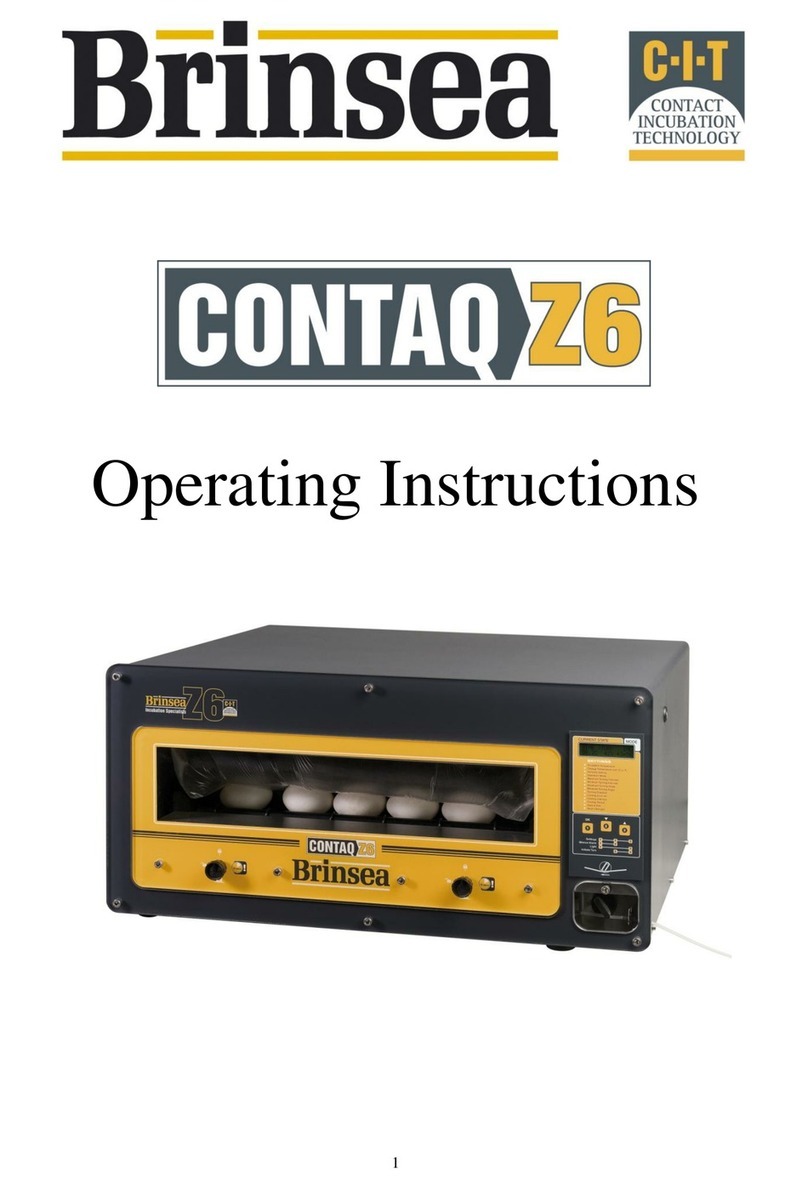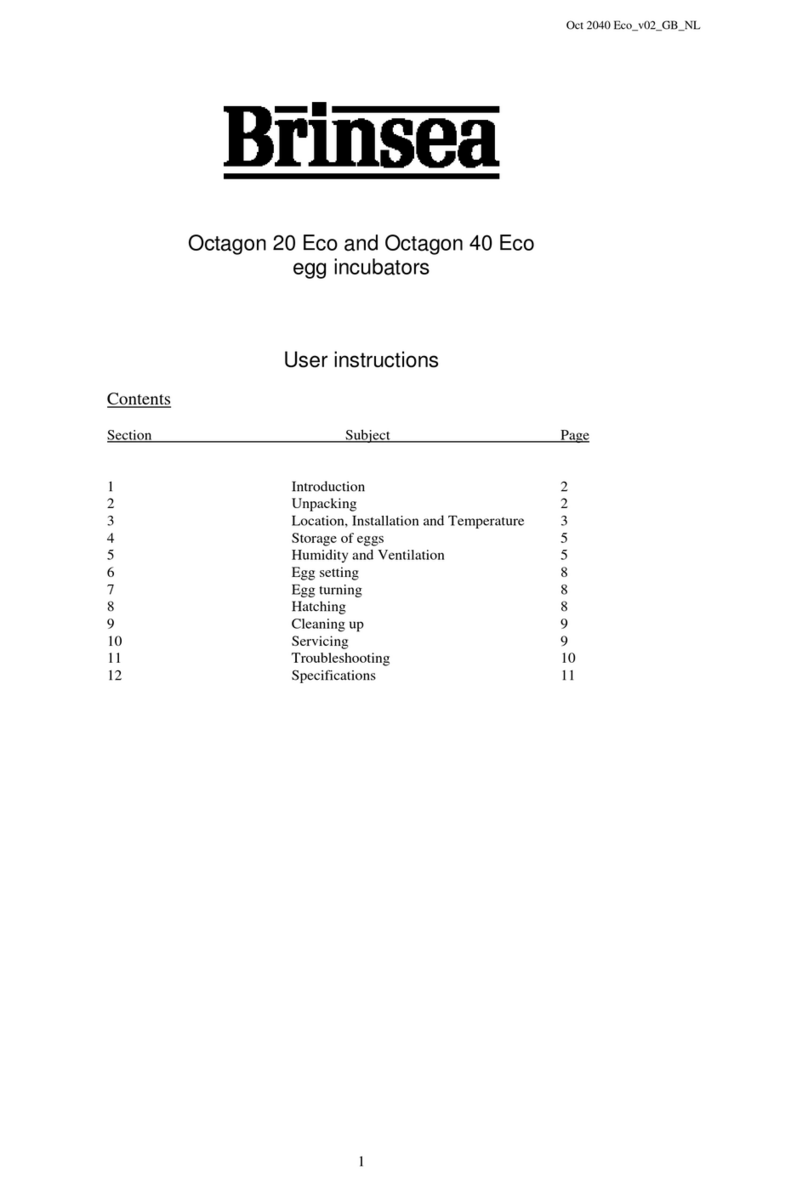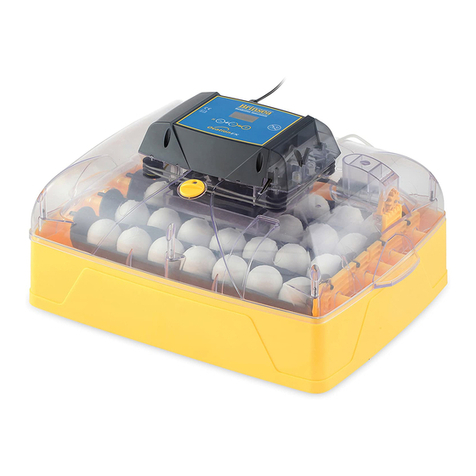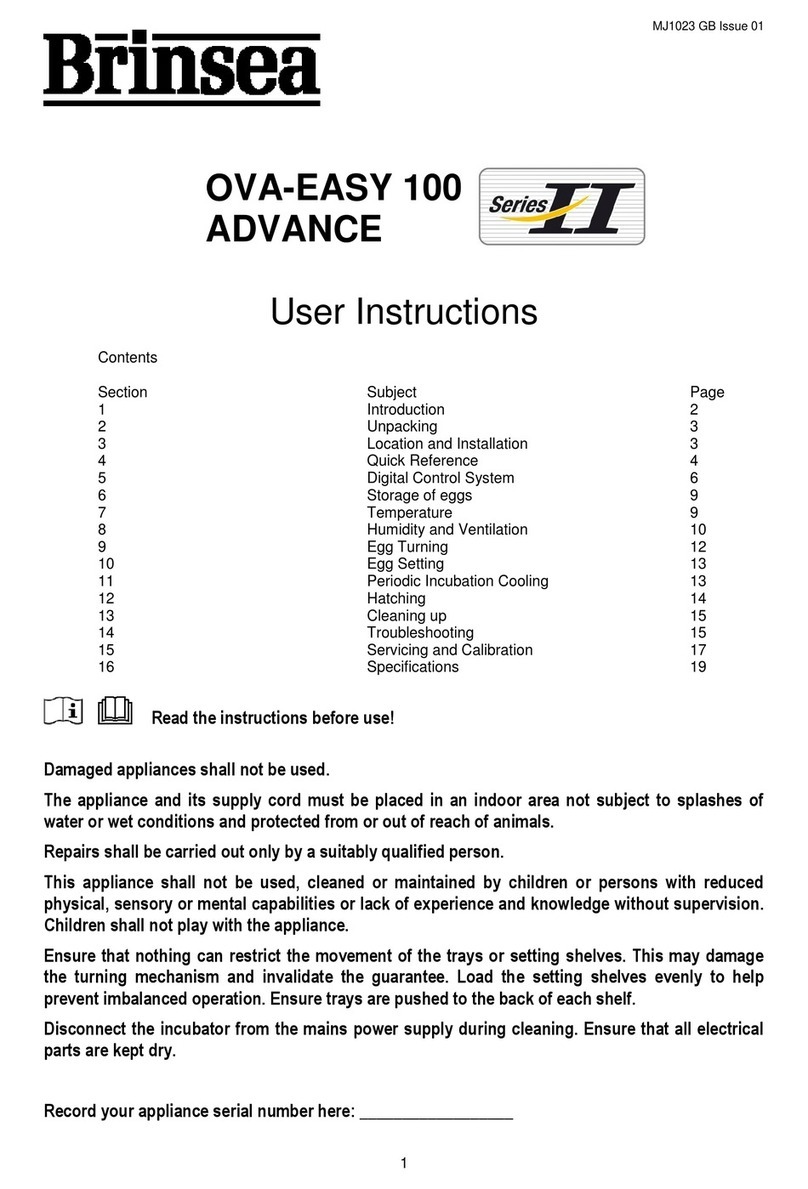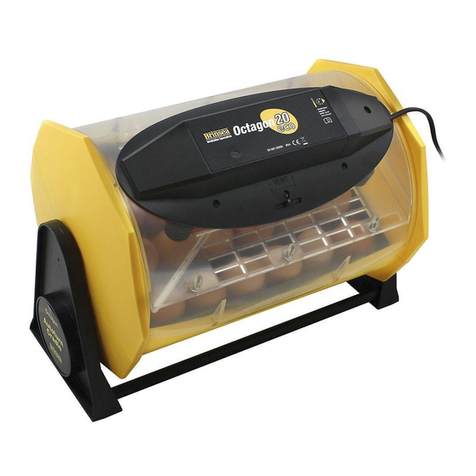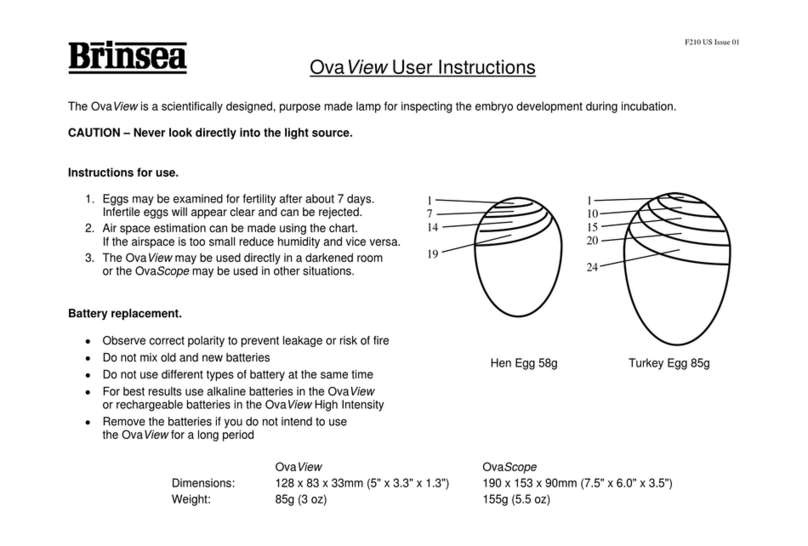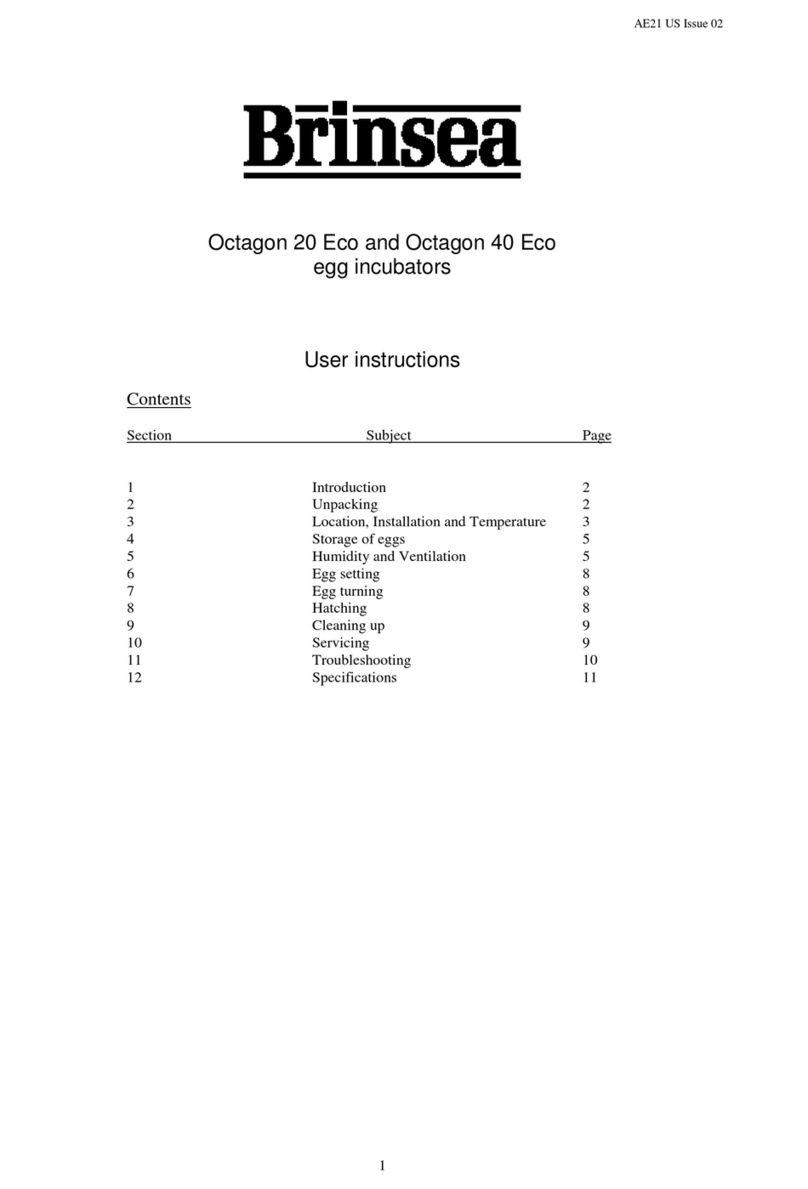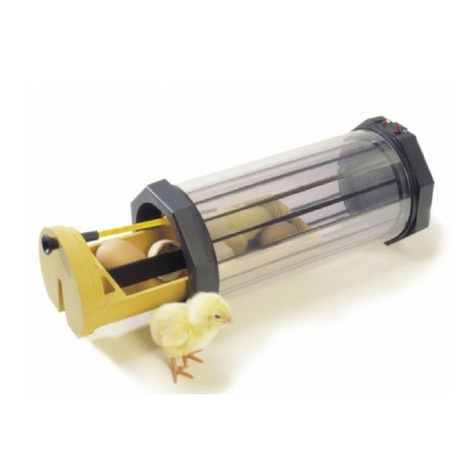A017 GB Issue 04
6
3 Unpacking
Your incubator and pump have been supplied in protective packaging. Please remove all tape, strapping and
packing from the incubator and parts. Retain the carton and packing materials to enable the unit to be repacked.
Your incubator will include as standard:
Quantity Item
1 Incubator (including removable lid)
1 Egg Disc for 12 small eggs
1 Egg Disc for 7 larger eggs
1 Water Pot Guard
1 Power Supply Unit
1 Advance Humidity Pump unit - free standing unit with water pump and signal lead to
connect to Mini EX incubator.
1 Clear Water Tank - 1 litre capacity, larger containers may also be used where
required.
1 Rubber Bung – to cover water filler hole.
1 Water tube (8 feet) - silicone rubber tube for interconnecting and for peristaltic pump
replacement.
1 Rigid water tube (125mm)
2 Evaporating card sheets
3.1 Please identify each part and check that they are all present and undamaged. If there are any parts
damaged or missing please contact your retailer or Brinsea Products (at the address at the end of the
document).
3.2 Please note that the pump capstan on top of the pump unit is deliberately mounted at an angle.
3.3 To register your new Brinsea product please visit www.brinsea.co.uk and follow the link on the right
hand side of the home page to qualify for your free 2 year guarantee.
3.4 Go to www.Brinsea.co.uk and register as a free member of the Brinsea Email Group to receive the latest
news and information such as advance notice about new products, special offers, exclusive competitions
and much more.
4 Location and Installation
4.1 Your incubator will give best results in a room free from wide temperature variations and with generous
ventilation – particularly if several incubators are running at the same time. Ensure that the room
temperature cannot drop on a cold night. Ideally thermostatically control the room at between 20 and
25°C (68 and 77°F). Never allow the room temperature to drop below 17°C (63°F) and ensure that
the incubator cannot be exposed to direct sunlight.
4.2 ONLY USE THE POWER SUPPLY UNIT SUPPLIED WITH THE PRODUCT. USE OF A
DIFFERENT POWER SUPPLY MAY CAUSE A HAZARD AND WILL INVALIDATE ANY
WARANTEE.
4.3 Place the incubator and water pump on a flat, level surface that is resistant to moisture and scratching.
The base of the incubator must sit flat on the surface as this traps air under it as part of the thermal
insulation.
